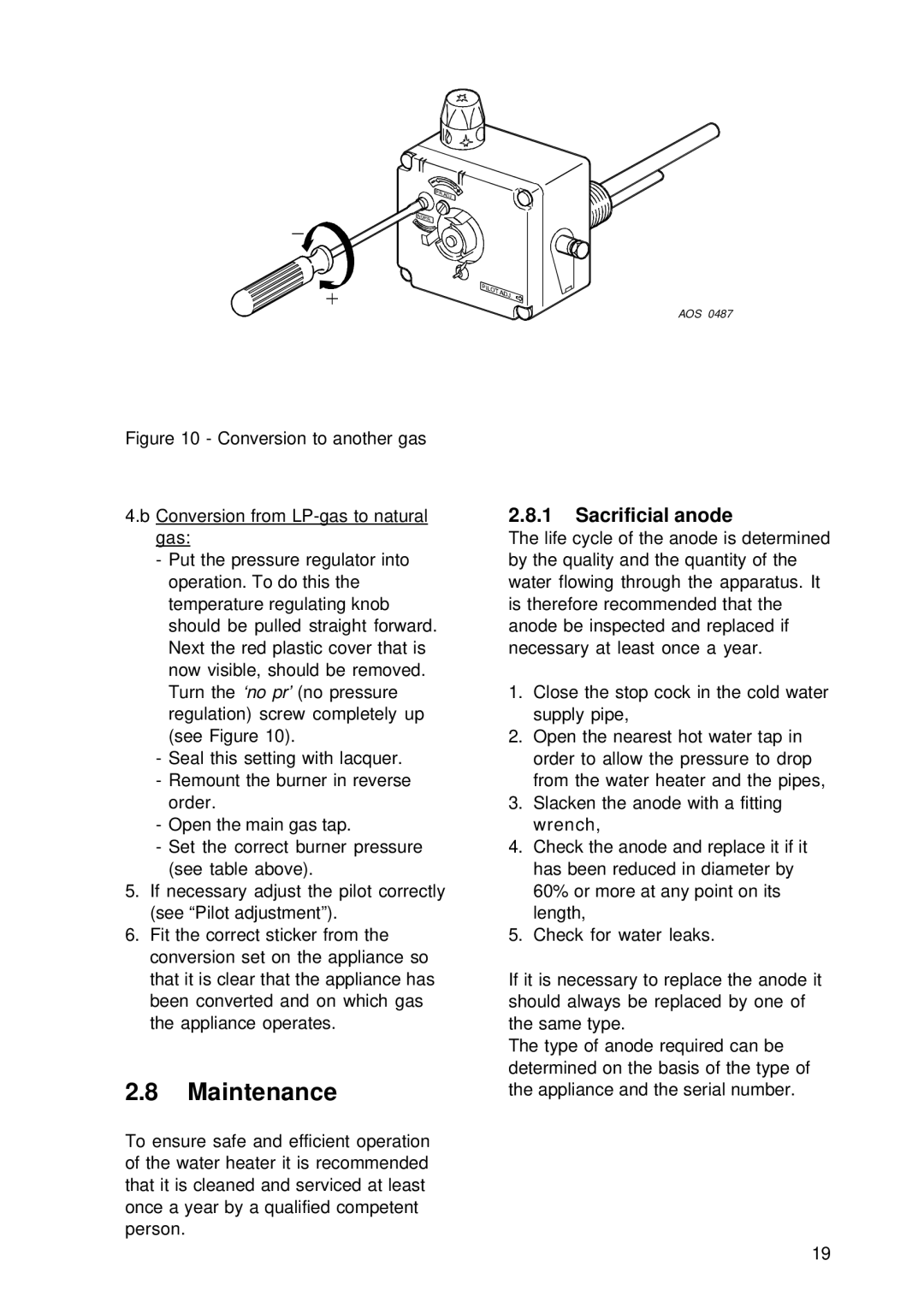EQH 200 G, EQ 115 G, EQ 155 G specifications
A.O. Smith, a reputable name in the water heating industry, has designed premium water heaters that cater to various needs, including the EQ 155 G, EQ 115 G, and EQH 200 G models. These units emphasize efficiency, reliability, and advanced technology to provide users with optimal hot water solutions.The A.O. Smith EQ 155 G is a gas water heater that boasts a 155-gallon capacity. Designed for high-demand households, it features an impressive recovery rate, allowing it to deliver hot water quickly. One of the standout features is its Energy Factor rating, which ensures energy efficiency and reduced operating costs. The EQ 155 G is also equipped with a durable enamel-coated tank that resists corrosion, ensuring longevity.
Similarly, the EQ 115 G model offers a slightly smaller capacity of 115 gallons, making it an excellent choice for medium-sized households. This gas-powered heater incorporates cutting-edge technology to maximize heat retention and minimize water heating costs. With features such as a patented Venturi mixing system, it provides uniform hot water distribution while minimizing energy wastage. Its slim design also allows for easy installation in tight spaces.
On the other hand, the EQH 200 G is a hybrid model that combines the benefits of both gas and heat pump technology. With a capacity of 200 gallons, it is designed for large families or commercial applications. The EQH 200 G utilizes advanced heat pump technology for energy-efficient heating, making it one of the most efficient options on the market. This model is particularly suitable for users looking to reduce their carbon footprint while enjoying consistent hot water supply.
All three models come equipped with user-friendly digital displays, allowing for easy temperature adjustments and monitoring. Moreover, these units feature robust safety mechanisms, including leak detection and temperature controls, to ensure user safety.
In summary, the A.O. Smith EQ 155 G, EQ 115 G, and EQH 200 G are innovative water heating solutions tailored to meet diverse requirements. With advanced technologies, high energy efficiency, and durability, these models exemplify A.O. Smith's commitment to quality and customer satisfaction in the water heating industry.

